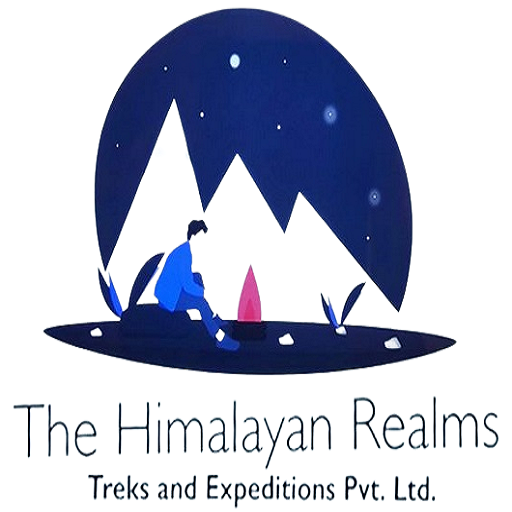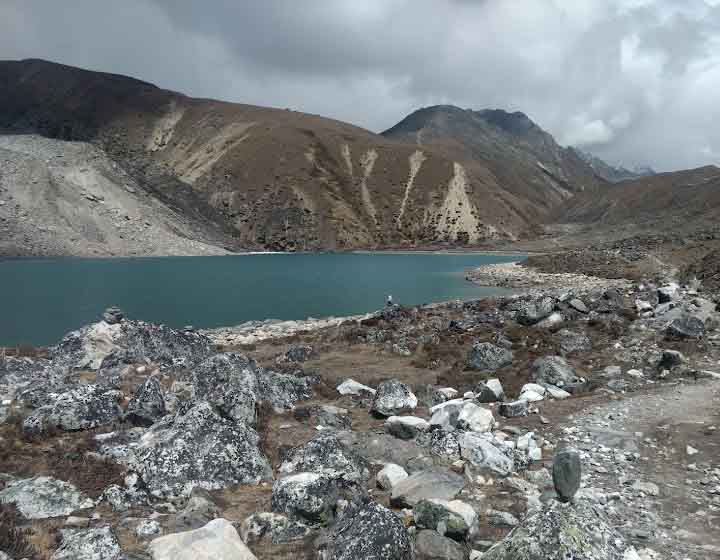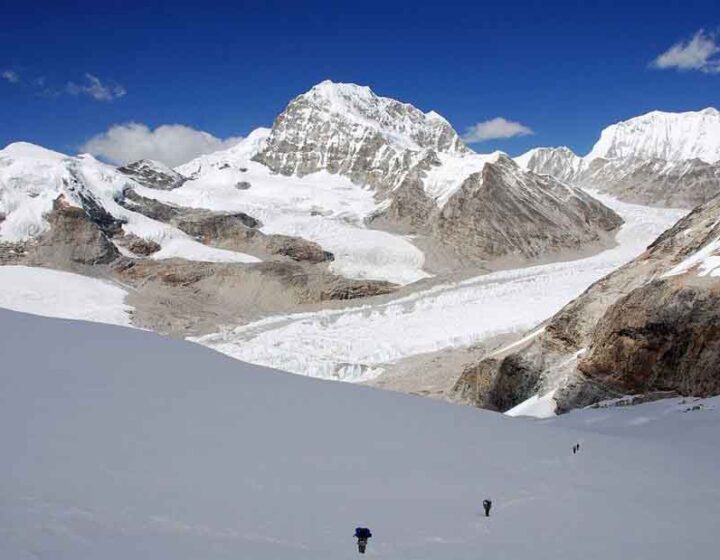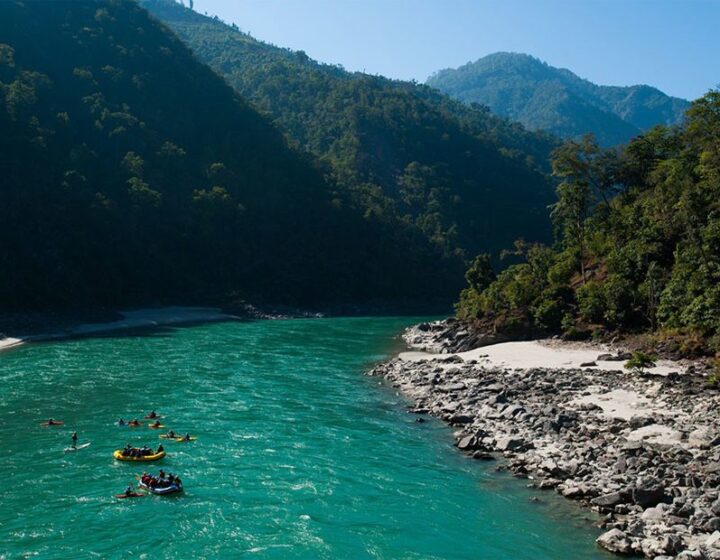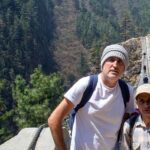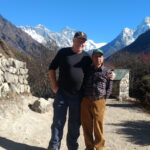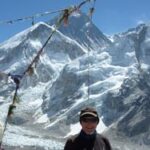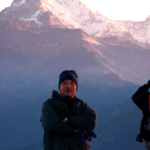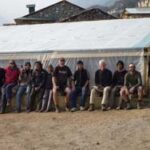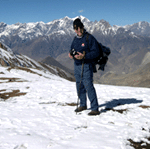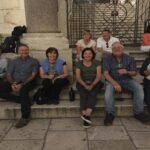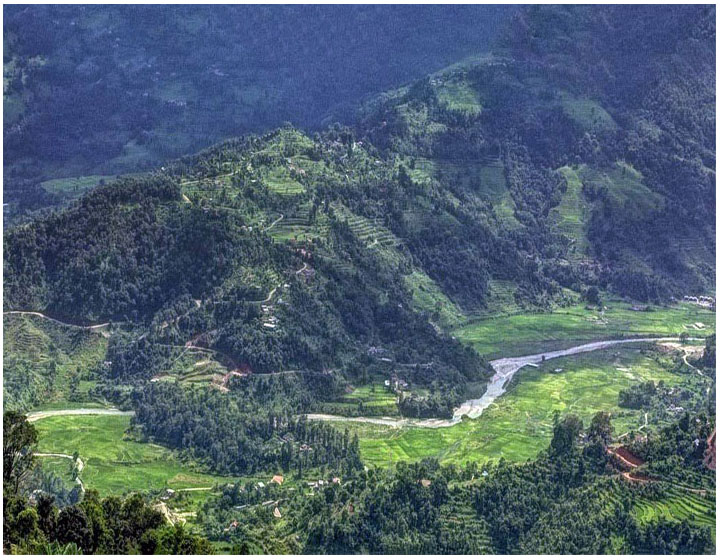
Trip overview
Overviews: Royal trek 4-days
The Royal Trek is a short and scenic trekking route in the Annapurna region of Nepal, ideal for beginners and those seeking a peaceful, cultural experience. Named after Prince Charles of the United Kingdom, who explored this trail in the early 1980s with his entourage, the trek offers a royal taste of Nepal’s natural beauty and traditional lifestyles without the challenges of high-altitude trekking.
This four-day journey begins from the beautiful city of Pokhara, leading you through a less-crowded route with stunning views of the Annapurna and Dhaulagiri mountain ranges. The trail passes through charming Gurung villages, terraced farmlands, and lush green hills. You’ll walk along quiet paths, interacting with locals and experiencing authentic rural Nepali culture.
Unlike more popular treks like Annapurna Base Camp or Ghorepani Poon Hill, the Royal Trek remains relatively untouched and peaceful. It’s perfect for trekkers with limited time or those who prefer a quiet, immersive trekking experience close to Pokhara. The highest point on the trek is under 2,000 meters, making it suitable for all age groups and fitness levels.
Despite its short duration, the Royal Trek is rich in experience. It combines panoramic Himalayan views, tranquil trails, cultural encounters, and a refreshing connection with nature. Whether you’re a first-time trekker or someone looking for a quick escape into the hills, the Royal Trek delivers a royal experience in every sense.
Introduction to the Royal Trek
The Royal Trek is a short and culturally rich trek located north of Pokhara in the Annapurna foothills. Its name comes from Prince Charles’s visit in the early 1980s, which gave the route both recognition and prestige. Ideal for those seeking a peaceful Himalayan experience, the trek follows an off-the-beaten-path trail through picturesque villages, rice terraces, and forested ridges. With an average elevation under 2,000 meters, there’s no risk of altitude sickness, making it accessible to all. This trek is especially suitable for families, older travelers, or beginners looking for a relaxed trekking experience. Its proximity to Pokhara also allows trekkers to enjoy both city comforts and remote village life in a short span. Though less known than longer treks, the Royal Trek offers stunning views of Annapurna, Machapuchare (Fishtail), and Langtang ranges, along with deep cultural interactions in Gurung settlements.
Highlights of the Royal Trek
The Royal Trek is packed with memorable highlights despite its short duration. One of the key attractions is the spectacular mountain views, including Annapurna South, Lamjung Himal, Machapuchare, and Dhaulagiri. The trail passes through charming villages inhabited by Gurung and other ethnic communities, offering unique insight into rural Nepali culture. Trekkers experience warm hospitality, traditional lifestyles, and agricultural practices unchanged for generations. The route is also known for its peacefulness—few trekkers visit this trail, so it’s ideal for those who value solitude in nature. The journey features terraced fields, forested ridges, and serene lakes such as Rupa and Begnas. Unlike more commercial routes, the Royal Trek provides a sense of authenticity and raw beauty. With gentle elevation changes, it’s a comfortable walk that doesn’t require technical skills. The combination of scenery, culture, and quiet trails makes this trek a gem for travelers seeking a short, enriching Himalayan journey.
Royal Trek—4 Days Itinerary
The Royal Trek unfolds over four days, starting and ending in Pokhara. On Day 1, you drive to Bijayapur and trek to Kalikasthan (1,370m), walking past rice paddies and small settlements. The day ends with mountain views and a peaceful night at a local teahouse. Day 2 takes you to Syaglung (1,730m) through a trail rich in forests, ridges, and rural culture. Expect fantastic views and authentic interactions. Day 3 leads to Chisapani (1,550m), one of the best vantage points of the trek. You’ll pass through traditional hamlets, enjoying glimpses of both nature and village life. Day 4 is a downhill walk to Begnas Lake via Rupa Lake. After exploring the lakeside scenery, you drive back to Pokhara. Each day offers a balance of scenic beauty and cultural immersion. The trek is designed for ease and enjoyment, with plenty of opportunities to rest, observe, and connect with the land and its people.
Difficulty and Best Time to Visit
The Royal Trek is considered easy to moderate in difficulty, making it suitable for all age groups and fitness levels. The highest elevation point is under 2,000 meters, so there is no risk of altitude sickness. The daily walking hours range between 4 to 6 hours, with well-marked trails and gentle ascents. No technical climbing or prior trekking experience is required, making it perfect for beginners and families. The best time to do the Royal Trek is during the spring (March to May) and autumn (September to November) seasons. These months offer clear skies, pleasant temperatures, and the best mountain visibility. In spring, rhododendron forests bloom in vibrant colors, adding beauty to the trail. While winter is also possible, some mornings can be cold. The summer monsoon season (June to August) is not recommended due to slippery trails and reduced views. With good preparation, the Royal Trek is comfortable and enjoyable year-round.
What to Pack for the Royal Trek
Though the Royal Trek is relatively easy, packing wisely ensures a smooth and enjoyable journey. Since the trek stays below 2,000 meters, you won’t need heavy winter gear, but you should bring layered clothing to adjust for varying temperatures—mornings and evenings can be cool. A comfortable pair of trekking shoes, moisture-wicking shirts, a warm jacket, a raincoat (especially during monsoon), and sun protection (hat, sunscreen, sunglasses) are essentials. A small backpack, reusable water bottle, and basic first-aid kit are also highly recommended. Include snacks, wet wipes, toiletries, and a power bank for charging your devices. Lightweight trekking poles can help with balance on descents. Since teahouses are available along the route, you don’t need tents or cooking equipment. However, bringing cash for small purchases and tips is important, as ATMs are unavailable on the trail. Proper preparation ensures you’re comfortable and focused on enjoying the trek’s natural and cultural beauty.
Permits and Entry Requirements
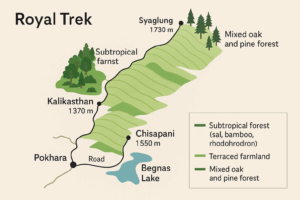
Although the Royal Trek is a short and relatively low-altitude trek, you still need a few official permits to enter the region. The two main permits required are the Annapurna Conservation Area Permit (ACAP) and the Trekkers’ Information Management System (TIMS) card. These permits help fund conservation efforts and ensure trekker safety. The ACAP costs NPR 3,000 for foreigners and NPR 1,000 for SAARC nationals. The TIMS card costs NPR 2,000 for independent trekkers and NPR 1,000 when trekking through a registered company. You can easily obtain both permits in Pokhara or Kathmandu, and you’ll need two passport-sized photos and a copy of your passport. These documents are checked at various checkpoints along the trail. Trekking with a local company makes the process smoother, as permits are arranged for you in advance. Always carry original copies during the trek, as spot checks may occur.
Accommodation and Food on the Trek
The Royal Trek offers basic yet comfortable accommodation in traditional teahouses or local lodges. Each stop—Kalikasthan, Syaglung, and Chisapani—has small guesthouses with simple rooms, usually furnished with twin beds, warm blankets, and shared bathrooms. While facilities are modest, the warm hospitality of local hosts makes the stay memorable. Electricity is usually available for charging devices, but Wi-Fi may be limited or unavailable. Meals on the trek typically include Nepali home-cooked food, with Dal Bhat (rice, lentils, and vegetables) being the staple. You’ll also find noodles, fried rice, pancakes, omelets, and seasonal vegetables on the menu. Teahouses serve tea, coffee, and bottled or boiled water. Dining areas often serve as communal spaces, perfect for interacting with other trekkers or guides. While food options are not as varied as on commercial routes, the freshness and local flavor of the meals make the culinary experience an enjoyable part of the Royal Trek.
Religious Beliefs and Traditions
The Royal Trek passes through villages primarily inhabited by the Gurung ethnic community, known for their deep-rooted Hindu and Buddhist beliefs. Small shrines, prayer flags, and chortens (Buddhist stupas) can be seen along the trail, reflecting the region’s spiritual harmony. Villagers often celebrate festivals like Dashain, Tihar, and Losar with great devotion. It’s common to see prayer wheels spinning and incense burning at local homes and temples. Many locals follow daily rituals involving offerings to deities and ancestral worship. While trekking, you may encounter traditional Buddhist mani walls, which are sacred and should always be passed on the left. These religious customs are not just ceremonies but a living part of the people’s identity. Engaging with local guides or villagers offers insight into how religion shapes their values, hospitality, and community life. For many trekkers, witnessing this spiritual depth adds a special layer of meaning to the journey.
Rural Lifestyle and Daily Life
The Royal Trek offers a close look at Nepal’s rural lifestyle, where simplicity and community are central. Most villagers live in traditional stone or mud-brick houses with slate roofs, often surrounded by terraced fields. Agriculture is the main livelihood—locals grow rice, millet, maize, and vegetables, often using age-old tools and techniques. You’ll see people tending to animals, fetching water, weaving, and cooking over open fires. Despite modernization in cities, these villages maintain a self-sustaining way of life, rich in tradition. Social ties are strong—neighbors help each other during harvest, weddings, or festivals. Children walk long distances to school, and elders play a key role in preserving oral history and customs. Trekkers often find this lifestyle inspiring, as it reflects a rhythm of life that’s closely tied to nature and community. Experiencing this daily routine firsthand is a key cultural highlight of the Royal Trek.
Vegetation and Landscapes
The Royal Trek offers an ever-changing canvas of lush vegetation and terraced landscapes. Beginning near the Pokhara valley, the trail leads through subtropical forests filled with rhododendrons, pine, bamboo, and oak. These forests are especially vibrant in spring when the rhododendrons bloom in shades of red, pink, and white. You’ll also pass through farmland terraces, where villagers cultivate crops like millet, corn, and rice. The diversity in elevation allows for a mix of flora, ranging from tropical plants in the lower sections to cooler-climate species higher up. Occasional waterfalls and streams add freshness to the environment. The well-preserved natural surroundings provide habitat for birds, butterflies, and small mammals, making it a peaceful walk for nature lovers. The trek is not just about mountain views but also about walking through landscapes shaped by generations of harmony between people and the land. It’s a green journey filled with life and color at every step.
Atmosphere and Overall Experience
The Royal Trek is known for its peaceful and authentic atmosphere, offering a quiet alternative to Nepal’s busier trekking routes. The trail is less commercialized, which means you’ll often have the paths to yourself, walking through tranquil forests, terraced fields, and village lanes. The soundscape is natural—birds singing, leaves rustling, and distant temple bells. There’s no rush, and trekkers can move at a gentle pace, enjoying the sights and interactions with locals. The absence of large crowds makes it feel more like a personal exploration than a group adventure. Weather-wise, the atmosphere is usually pleasant, especially in spring and autumn, when clear skies and mild temperatures dominate. The sense of calm, combined with cultural richness and scenic beauty, creates a holistic experience. Many describe the Royal Trek as a soulful journey—refreshing for both the body and mind. It’s ideal for those who seek connection over challenge, reflection over record-setting.
Why Choose The Himalayan Realms for the Royal Trek?
Choosing The Himalayan Realms Treks and Expedition Nepal Pvt. Ltd. ensures a smooth, safe, and enriching Royal Trek experience. Our company is led by a passionate and experienced team with over 35 years in Nepal’s trekking industry. We provide licensed guides, well-planned itineraries, and local knowledge that enhance your cultural immersion. Our team handles all logistics, including permits, accommodation, transportation, and meals, so you can focus on enjoying the journey. We promote eco-friendly and community-based tourism, ensuring your trek benefits local people and preserves the natural environment. With personalized attention and flexible services, we cater to solo trekkers, families, and small groups. Whether it’s your first trek or a return trip to Nepal, we ensure comfort, authenticity, and unforgettable memories. When you trek with us, you’re not just walking a trail—you’re experiencing Nepal through the eyes of those who call it home.
conclusion
The Royal Trek offers a short yet enriching trekking experience, ideal for those seeking stunning mountain views without strenuous climbs. With its gentle trails, traditional Gurung villages, and panoramic vistas of Annapurna, Machapuchare, and Langtang, this trek provides a perfect blend of natural beauty and cultural insight. Named after Prince Charles’ journey in the 1980s, the route remains less crowded, offering a peaceful alternative to more popular treks. Suitable for beginners, families, and time-limited travelers, the Royal Trek is a rewarding Himalayan adventure that leaves lasting memories of Nepal’s charm, hospitality, and majestic landscapes.
Itinerary
From Kathmandu to Beganas Tal take a pleasant bus or private vehicle. Beganas Tal is one of the beautiful lake in Nepal. (be sure to bring your swimming suits), this takes about 6 to 7 hours. Than hike for 1 hour to Sunder Danda school, where one can see Machapurchhere (Fishtail), Lamjung, Dhaylagiri, Gangtapurna and the Annapurna Mountains as well as Beganas Tal, Rupa Tal and beautiful wilderness. This lovely villages and gives an excellent opportunity to learn about Nepali culture.
From sundar Danda walk 3 hours to the lunch stop in a local schools (with an excellent view of the Himalayas ). Then walk another hour to camp, at Kakikakasthan, where one can see the temple of Goddess Kali (goddess of power).
Day 03. From Kaliasthan trek for 2 hours to Tamkot,, stopping along the way in syggre Bhanjayng. At Ramkot, stop for lunch before to start a 2-hour walk through a beautiful serene forest to syaklung, to spend the night.
Now the trek will be starting for 3 hours walk to Bhirchwok, to take a break for lunch. Then continue walking for a couple short hours, always enjoying the magnificent Annapurna until reaching Chisapani, Here one can take in the unsurpassed view of the holy Machhapuchere Mountain, as well as the rest of the Himalayan range.
On the last day descend into the lovely Pokhara valley (the Switzerland of Nepal), where, say our good-byes to one another, but not the Himalayas , which can still be viewed from Pokhara.
Drive or fly back to Kathmandu:–You have an option of both driving as well as flying back to Kathmandu.From Pokhara Kathmandu flight swifts along the Himalayas unveiling Manaaslu, Ganesh Himal and Langtang ranges. Arrive in the Kathmandu airport and transfer to the hotel. Check in the hotel and rest about one hrs then visit to the Thamel area for souvenir shopping.
Our journey in Nepal comes to an end today! We will drop International airport approximately 3 hours before our scheduled flight. Your own way to home, we have plenty of time to plan our next adventure in the wonderful country of Nepal.
Included
- 2 Night accommodation in Kathmandu with B/B basic plan
- Kathmandu to Pokhara transfer by tourist bus.
- 1 Night’s accommodation in Pokhara with B/B basic plan
- All airport and hotel transfers
- National permit & TIMS permit (Trekking Information Management System)
- Accommodation, food and Tea/coffee during the trek
- Guideincluding salary, insurance, equipment, flight, food and lodging
- Porterincluding salary, insurance, equipment, food and lodging
- Transfer from Beganash Tal to Pokhara by private Car
- For guestsjacket, Good sleeping bag (down jacket and sleeping bag are to be returned after trip completion)
- All government and local taxes
Not Included
- Food in Kathmandu (Lunch & Dinner)
- Food in Pokhara (Lunch & Dinner)
- Bakery food during the trek. When you eat in the bakery, you need to pay by yourself
- Nepal Visa fee
- International airfare from your country to Kathmandu and from Kathmandu
- Extra night accommodation in Kathmandu
- Travel and rescue insurance if guests get mountain sickness and need a rescue helicopter.
- Personal expenses example (phone calls, laundry service , bar bills, battery recharge, extra porters, bottle or boiled water, shower, etc.)
- Tips for Staff
Join Us Upcoming Trips
Book this trip with us. Here are the upcoming dates. Feel free to share this trip with your friends and family. For custom trips or general inquiries contact us.
| Departure Date | Price | Status | |
|---|---|---|---|
| 12 October, 0025 | $2000 | Fixed departure | |
| 15 October, 2025 | $2000 | Fixed departure | |
| 05 November, 2025 | $2000 | Fixed departure | |
| 22 November, 2025 | $2000 | Fixed departure | |
| 28 November, 2025 | $2000 | Fixed departure | |
| 12 December, 0025 | $2000 | Fixed departure | |
| 09 December, 2025 | $2000 | Fixed departure | |
| 15 December, 2025 | $2000 | Fixed departure |
Useful Info
Region: Annapurna (Near Pokhara)
Duration: 4–5 days
Grade: Easy to Moderate
Max Altitude: ~1,730 meters (5,675 feet)
Start Point: Bijayapur Khola (near Pokhara)
End Point: Begnas Lake
Trek Type: Teahouse & homestay-based
Best Time to Go
Spring (March–May): Clear skies, blooming flowers, pleasant temperatures
Autumn (September–November): Stable weather, excellent mountain views
Winter (Dec–Feb): Fewer trekkers, colder mornings and nights
Monsoon (June–August): Not recommended due to rain and leeches
Highlights
Views of Annapurna, Machapuchare (Fishtail), and Langtang Himal
Traditional Gurung and Magar villages
Low-altitude trek suitable for beginners and families
Tranquil trails with few tourists
Ends at scenic Begnas Lake
Permits Required
Annapurna Conservation Area Permit (ACAP)
TIMS Card (Trekkers’ Information Management System)
Both permits can be arranged by us prior to your trek.
Accommodation
Simple teahouses or local homestays
Basic but clean rooms
Shared bathrooms (in most locations)
Meals
Dal Bhat (rice, lentils, vegetables)
Noodles, chapatis, eggs, fried rice
Limited Western options
Vegetarian meals are available everywhere.
What to Pack
Lightweight trekking clothes
Warm jacket for evenings
Comfortable hiking boots
Hat, sunglasses, sunscreen
Water bottle + purification tablets
Personal toiletries & first aid
Camera/phone + charger (solar recommended)
Connectivity
Mobile signal (Ncell/NTC) available in most areas
Limited or no Wi-Fi—a great chance to unplug
Useful Tips
Hire a local guide for cultural insights and safety
Carry cash (no ATMs on the trail)
Respect local customs and dress modestly
Bring snacks and energy bars if desired
Stay hydrated and avoid single-use plastic
Insurance
Travel insurance is essential for anyone undertaking the Royal Trek, even though it is a low-altitude and relatively easy route. While the trek doesn’t reach extreme elevations, unforeseen situations like illness, injury, or travel delays can still occur. A good insurance policy should cover medical expenses, emergency evacuation, trip cancellation, lost baggage, and personal liability.
Although helicopter evacuation is unlikely on this route, having coverage provides peace of mind in case of emergencies. Choose a policy that includes trekking in Nepal up to 2,000 meters, which is sufficient for the Royal Trek.
Make sure to carry a copy of your insurance policy and emergency contact numbers with you during the trek. If you're booking with The Himalayan Realms Treks and Expedition, we can assist you with guidance on suitable insurance plans and providers. Insurance is not just a formality—it’s an important safeguard for your safety and investment.
Getting There
To Pokhara: 25-min flight or 6–7 hr drive from Kathmandu
To Trek Start (Bijayapur): 30–40 min drive from Pokhara
Return from Begnas Lake to Pokhara takes around 1 hour
FAQs
-
What is the Royal Trek?
The Royal Trek is a short and scenic trekking route in the Annapurna region of Nepal. It gained its name after Prince Charles and his entourage trekked the route in the 1980s. It offers an easy, culturally rich experience with panoramic views of the Annapurna and Langtang ranges.
-
Where does the Royal Trek start and end?
The trek typically starts from Bijayapur Khola, near Pokhara, and ends at Begnas Lake, a beautiful and peaceful lake about 30 minutes from Pokhara.
-
How long is the Royal Trek?
The Royal Trek usually takes 4 to 5 days to complete, depending on the itinerary and pace.
-
What is the maximum altitude on the Royal Trek?
The highest point on the trek is around 1,730 meters (5,675 feet), making it ideal for beginners or those who want to avoid altitude sickness.
-
Is the Royal Trek difficult?
No. It’s considered an easy to moderate trek suitable for beginners, families, and older travelers. No prior trekking experience is needed.
-
What are the highlights of the Royal Trek?
Stunning views of Annapurna, Machapuchare (Fishtail), and Langtang ranges Authentic Gurung and Magar villages Low altitude, less crowded route Rich cultural experiences and local hospitality Scenic end at Begnas Lake
-
What kind of accommodation is available?
Accommodation along the Royal Trek is mostly homestays and simple teahouses. These provide basic but comfortable lodging with local meals.
-
Do I need permits for the Royal Trek?
Yes, you need: Annapurna Conservation Area Permit (ACAP) Trekkers' Information Management System (TIMS) Card We arrange all required permits for you.
-
Can children or older people join the trek?
Yes, due to its low altitude and moderate pace, the Royal Trek is suitable for families with children and elderly travelers in good health.
-
Is travel insurance required?
Yes. Travel insurance that covers emergency evacuation, medical care, and trip cancellation is strongly advised, even though the trek is low-altitude.
-
What kind of food is available on the trek?
eahouses and homestays offer Nepali and basic Western dishes, including Dal Bhat (rice with lentils), noodles, soups, eggs, vegetables, chapati, and sometimes pasta or fried rice.
